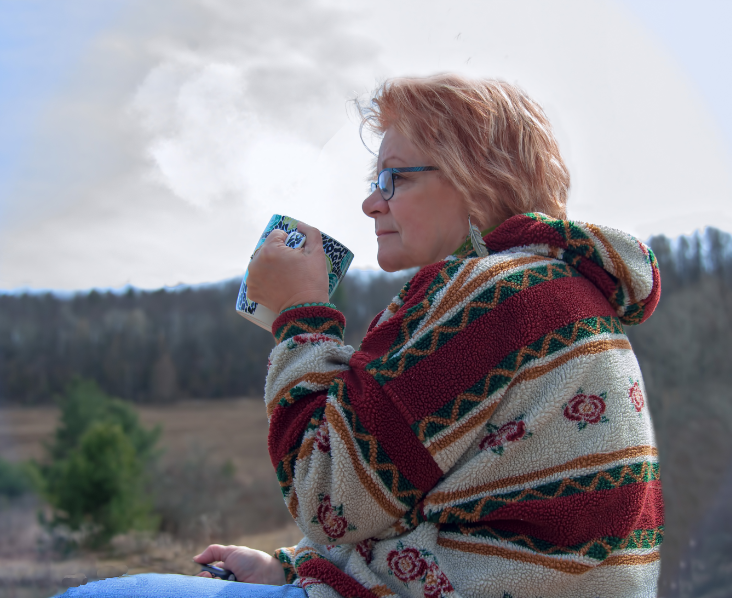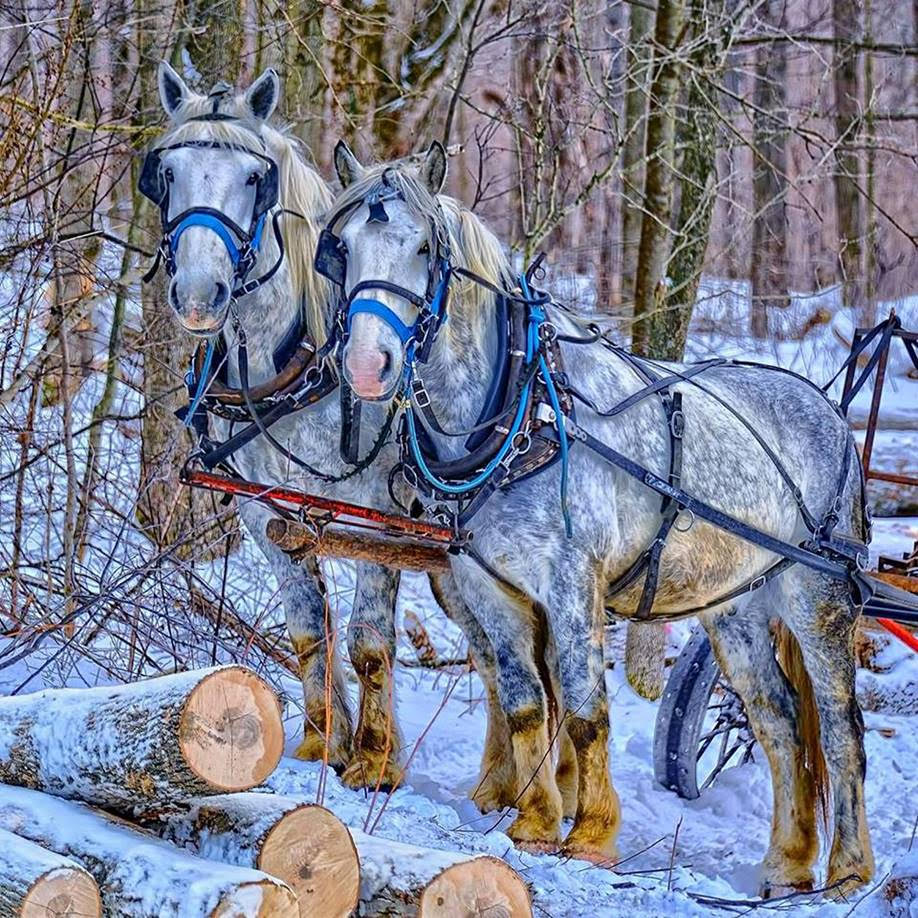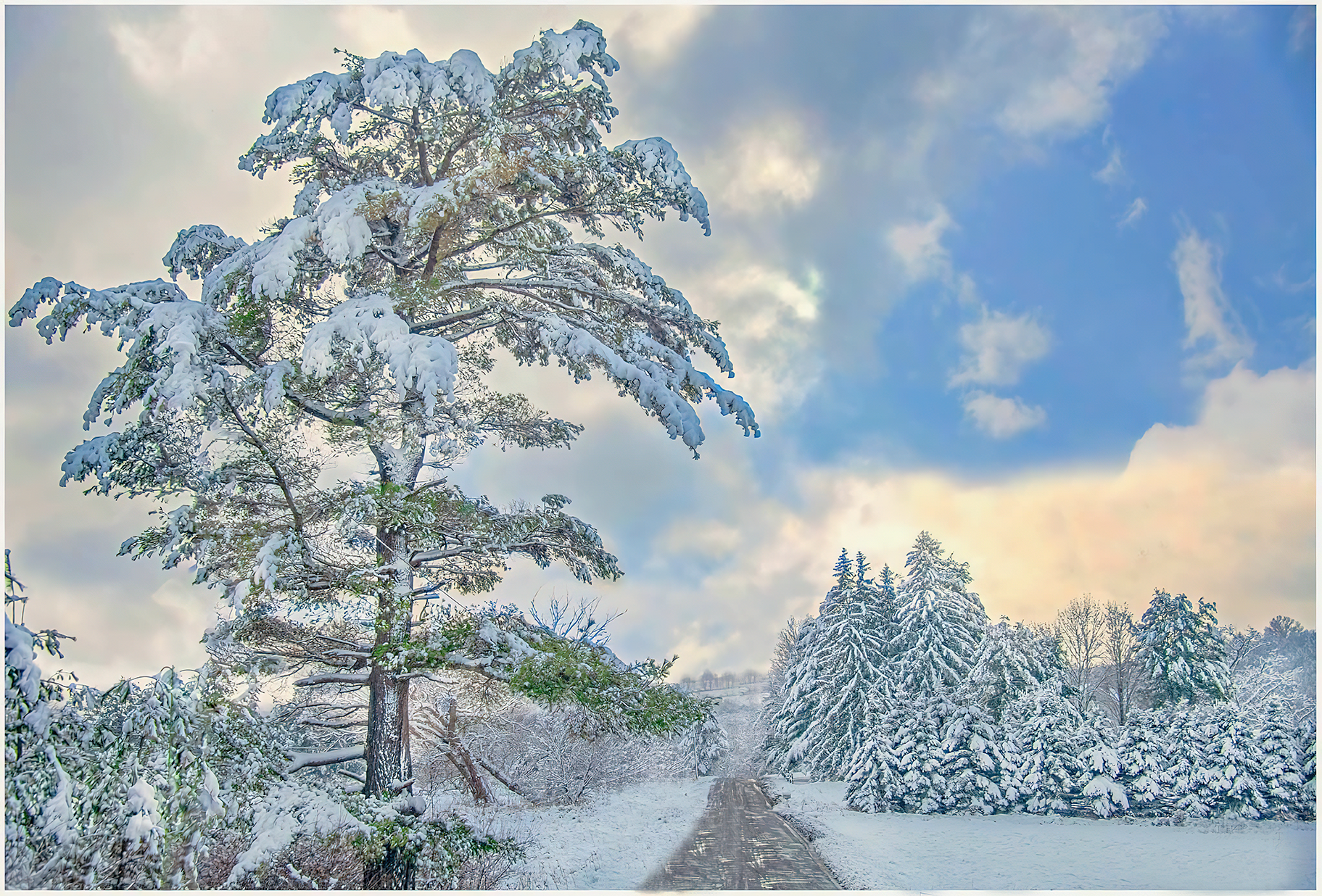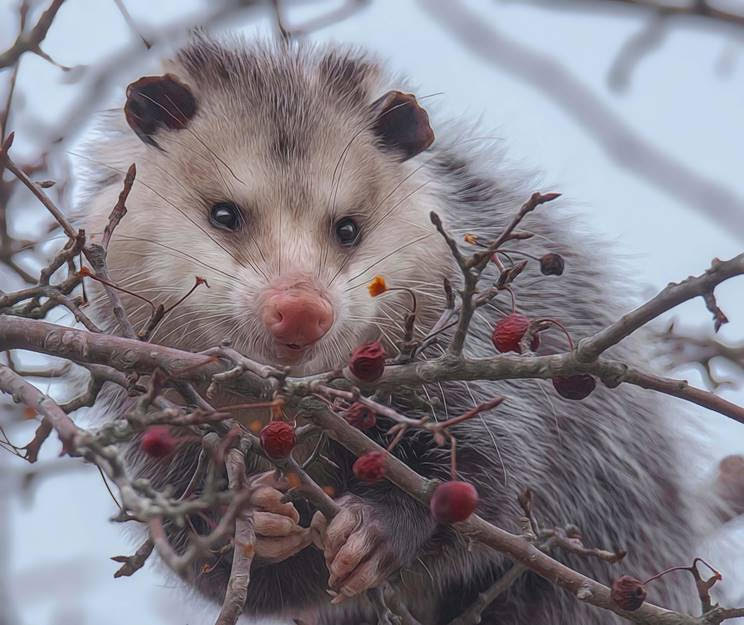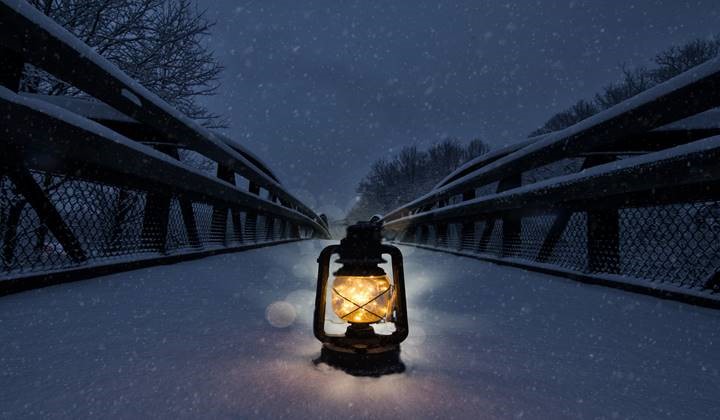By Bernadette Chiaramonte
Deep in the snowy hills of the northern Pennsylvania Wilds, photographer Bernadette Chiaramonte is no stranger to venturing out on cold, blustery days to get some spectacular shots of winter scenes.
Tioga County, where Bernadette lives, is up in what is known as the Pine Creek Valley and PA Grand Canyon landscape of the PA Wilds region. The higher elevations, ridges and gorges, and northern latitude of Tioga County means it has some of the most beautiful winter scenery. Over the years as owner of Edge of the Woods Photography, Bernadette has used the gorgeous landscape and wildlife to capture some great photos during the winter months.
Now, she has some tips for others to be able to use the winter season to get beautiful photos too.
Winter lighting
Although she appreciates every season, Bernadette says there is a real difference between the look of winter photography and summer photography. “In photography, light is the most important factor. In summer, the light is a constant helping you create your favorite palette. In the winter, light gets softer and more subdued,” she explains. “Ambient light, which is normally blue in tone, is more prevalent in the winter months. It gives the winter scene a cool winter feeling, something which is difficult to do with a summer light.”
“Chase the winter blue light that occurs just moments before the sun rises,” she suggests. “A neutral density filter can make ice look brighter at this hour.”
Preparing for the day
Planning ahead for the perfect photo starts before you even pick up the camera. “When setting out to trek into the winter world, first check your forecast,” says Bernadette. “Prioritize your shots. Having a clear plan before leaving your house. I prefer to start out at 8 a.m. and finish by 5 p.m. Some people prefer artificial light when it’s a dull day. Flashes can keep fill in the deep dark shadows.”
Really great photos require forethought, especially if you’re planning a portrait session for someone or trying to capture a specific moment. “Scout your spot 24 hours before. Visit the scene at the same time as your planned shoot. Make sure you can set up a tripod and the sun are in good places for your composition,” Bernadette advises. “The best time for scheduling photo sessions in winter is to coordinate with the sun at its lowest setting creating a soft warm light. This is what is known in the photography world as Golden House. It is the most flattering time for portraits, reducing harsh shadows.”
“Because winter daylight is shorter, it will take more planning before leaving the house,” says Bernadette. “It’s more about planning for the subtle play of ambiance and winter calmness.”
Know your camera
Knowing your camera and how to use your exposure is important when getting a great winter shot. “When capturing scenes of say, for example, bare trees against a field of white, the tough part is keeping the snow white,” explains Bernadette. “Your camera light meter will want to render it a midtone gray. Use exposure composition and bracket your shots.”
The beauty of falling snow
Of course, one of the best things about winter photography is capturing scenes with falling snow. The snowflakes in the air can be magical for your photography, but those flakes can be hard to catch on film.
“If flakes are falling, shoot at 1/250 or 1/500 second to eliminate the blur of snow falling,” Bernadette suggests. “A handheld shutter speed of ISO 1600 should be around ½ second to maintain the same brightness. Try using your flash. It will enhance the snowflakes closest to your camera without affecting the scene in the background. Using a lens hood can also help.”
Again, knowing your camera and exposure makes a difference for capturing snowflakes. “You need to overexpose for snow. Brighten up exposure by using exposure compensation button 1 / ½ or two f-stops. Use bracketing when possible.”
A variety of winter scenes
Besides the falling snow itself, Bernadette says there are plenty of other unique experiences to catch in a photo during the winter season. “Some of my favorite scenes are snowball fights! You can also find beautiful ice formations, frozen lakes and waterfalls, and frosted windows,” she says. “Cozy winter cabins with smoke wafting from the chimneys can evoke winter memories. Some wildlife are easier or more interesting to photograph in winter too, such as elk, deer, or pheasants.”
Protecting your equipment
While you’re out and about photographing in the winter, Bernadette reminds photographers to protect their gear. “Even light snow can be fun to play around with but you will need to protect your camera and equipment,” she says.
“I bring back up camera batteries, and I keep extra in my pocket next to my body heat because batteries die faster when cold. Have your gear against your body as much as possible,” Bernadette advises. “Keep your camera in a bag after turning it off, for at least for 2 hours once you go inside. This will allow the camera to slowly come back up to temperature and avoid condensation.”
“Remember your camera might misbehave in freezing temperatures!” she adds. “A good lens hood is a necessity. A rain cover will give more protection for the camera, and tripod will help steady your camera.”
Protecting yourself
Besides protecting your equipment, you should also think about protecting yourself from the cold. “I use my warmest gloves, but I love ones that are heated and fingerless,” says Bernadette.
“Layers!” she emphasizes. “My preference is wool midweight as the first base layer, along with an insulated jacket, insulated and waterproof boots, a balaclava, scarf, and neck gaiters can help with the cold. It’s really up to your personal preference. Crampons or microspikes on your boots can help you from falling on the ice.”
Bernadette knows that, especially in the northern and more mountainous part of the PA Wilds, travel can become unexpectedly tricky in the winter weather. “Bring a thermos with a warm drink,” she says. “Four-wheel drive is preferred, and bring snow removal tools in case you get stuck. A full tank of gas is a must too!”
Winter is worth it
Despite the fact that winter exploration can be more difficult, Bernadette says it’s all worth it. “Some of my favorite winter photography memories include capturing winter scenes at The Hyner View State Park. Colton Point State Park in winter is absolutely magical,” she says. “Of course, catching a glimpse of elk in the winter is phenomenal too.”
Learn more about Edge of the Woods Photography
Winter isn’t the only thing that has inspired Bernadette! Whether capturing sacred scenes of nature, wildlife, old buildings, or landscapes, Bernadette is there.
Want to see more of Bernadette Chiaramonte’s photos from Edge of the Woods Photography? Visit her Facebook business page here.
About the author, Bernadette Chiaramonte:
Bernadette Chiaramonte is a 12-time winner of the Citizens & Northern Bank calendar contest and a retired Registered Nurse from Robert Packer Hospital and Soldiers + Sailors Memorial Hospital’s Emergency Department. As a two-time PA Wilds contest winner, and a member of Professional Photographers of America, Chiaramonte’s photographs are published in many Pennsylvania tourism and travel brochures. She is a member of PA Wilds and PA Route 6 Artisan Trail. She also won three times for The Keystone Press Award for Feature Photo in Mountain Home Magazine. She has had shows at the Crary Art Gallery, Gmeiner Art and Cultural Center, The Native Bagel, Deane Center, UPMC Wellsboro, Lynn Hall in Port Allegany, and Mountain Home Art Gallery. Recently she won first place in the Develop Tioga Contest! “Photography transcends time. It takes you to places you have never been. It makes you stop and be in that one moment. When I am photographing a landscape, wildlife, or the stars in the sky my worries in life just fade away. It is a very real experience for me. I just love the photographic medium for expressing what I love about life on Earth, a planet we take too much for granted.” Learn more at https://www.facebook.com/pinecreekartist

Author: Guest Contributor
The Pennsylvania Wilds is home to more than 2 million acres of public land, 50 state game lands, 29 state parks, 8 state forests, 2 National Wild & Scenic Rivers, abundant wildlife, hundreds of miles of land and water trails, some of the darkest skies in the country, and the largest elk herd in the northeast.
The PA Wilds team is grateful to share the many stories of this region through the words and images of our talented guest contributors.



